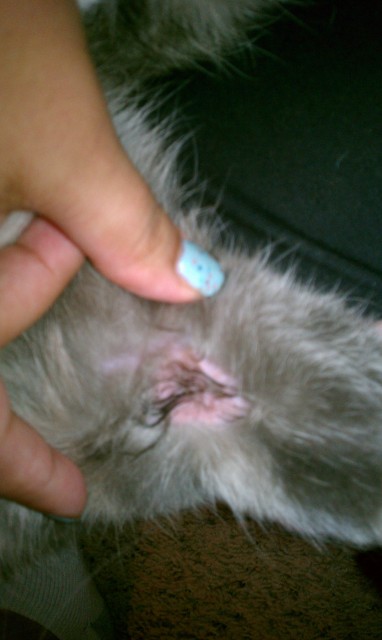QuestionHello! I have a 4 year old female house cat that has been in the family for most of her life. She is fixed and vaccinated and has never been outside unsupervised. She has not been declawed and has never been diagnosed with any health problems. I feed her dry food and water and she does quite well on her own. My boyfriend and I are ready to move in together, however, he is extremely allergic to the cat. The property we are looking at is on 2 or 3 acres, and I want to put the cat outside to live. There is not much resource material online about this issue. The property is more country than anything, and there are ferral cats and raccoons that roam freely. We have not seen any wild animals bigger than the cat, yet. I have a collar and tags for her; I could get her flea treatments. Would I be a horrible mommy for choosing to live with my boyfriend and putting my cat outside?
AnswerHi Eva. In all honesty, it's extremely dangerous. The average outdoor cat lives 1-3 years. The average indoor/outdoor cat lives 2-4. The average indoor cat lives 12-15. If she wasn't raised to be wary of the dangers outdoors, she's at an ever higher risk for injury. You can see why it would be in her best interest to find her another home, instead.
The city is a dangerous place because of traffic and the potential for poisoning. However, the country poses unique dangers. Feral cats frequently carry two fatal, incurable diseases called feline leukemia and feline AIDS. There are vaccines, but the leukemia vaccine frequently causes cancer at the vaccination site and it's nowhere near 100% protective, and some evidence suggest the AIDS vaccine isn't effective at all. Also, raccoons can be very cantankerous creatures, and cats are no match for these guys. Their claws are much longer and sharper than a cat's, and so are their teeth. Their paws are semi-prehensile, so they're able to grasp things, while your cat cannot. A cat can scratch, but a raccoon can dig in and hold with his paws. There are also coyotes in every state. They live in desert and forest, city and country, in the mountains and on the beach. I live on an island, and they've even made it here, but you will not see a normal coyote, because they're nocturnal and shy and afraid of people. Cats are on their menu. In one study, there were cat bones found in 25% of coyote feces. The means they'd eaten cats within the last day. And then you have the weather to deal with if she won't be allowed inside at all. Both extreme heat and extreme cold are common causes of death in outdoor cats, following disease and predators.
I know all of these things because, well, I work with a feral cat rescue org, so I have to know my outdoor cat facts. But on a more personal level, I used to live on a farm, and I used to let my cats outside. I spent a lot of time bandaging up cats who were in raccoon fights, some barely making it home with gaping wounds, days after disappearing. I lost a lot of cats to feline leukemia and feline AIDS. I had cats eaten by coyotes. You can try making her an outdoor cat. There are a few who, despite all the odds stacked against them, do survive longer than others. But I think the most loving choice would undoubtedly be to find her another indoor home.

 giardia coccidia
Questionthin, spiny guard hair
QUESTION: I took
giardia coccidia
Questionthin, spiny guard hair
QUESTION: I took
 Treating cat dominance/aggression with prozac
QuestionI adopted a 3-year old male from the shelter th
Treating cat dominance/aggression with prozac
QuestionI adopted a 3-year old male from the shelter th
 Kitten breed
Question
Minnoo
Dear Sir,
I brought home a female kitte
Kitten breed
Question
Minnoo
Dear Sir,
I brought home a female kitte
 Im terrified... my cat may be dying
Question
My Edward
First of all I want to thank you for
Im terrified... my cat may be dying
Question
My Edward
First of all I want to thank you for
 Small bald spot?
Question
Chibi arm
I was playing with my almost
Small bald spot?
Question
Chibi arm
I was playing with my almost